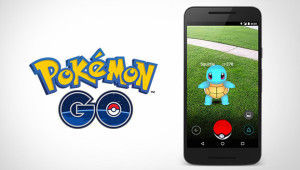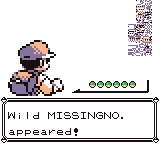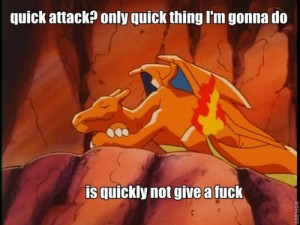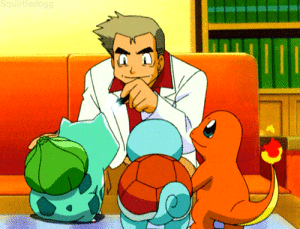 As anyone who has browsed the internet, used a phone, or gone outside in the past week is likely aware, Nintendo and Niantic recently partnered to create Pokemon Go, an augmented reality mobile-game that tasks players with roaming the real world to catch the virtual, titular creatures. Already, the game has been a meteoric, shocking success by any account:
As anyone who has browsed the internet, used a phone, or gone outside in the past week is likely aware, Nintendo and Niantic recently partnered to create Pokemon Go, an augmented reality mobile-game that tasks players with roaming the real world to catch the virtual, titular creatures. Already, the game has been a meteoric, shocking success by any account:
- Nintendo’s stock skyrocketed 24.5%, adding $7.5B to its market value
- New users struggle to sign up because Niantic’s servers can’t keep up with the volume of requests for new accounts
- Think pieces are being written not just by gaming/tech blogs but by prestige publications too (e.g., The Ringer, The New Yorker, Bobcat Territory)
- An entire cottage industry has sprung up
- Its user-count has already surpassed that of Twitter
We’re only seven days in, and the app is already the biggest mobile game is U.S. history.
 This all hits close to home, as I’ve loved Pokemon – the original 150, obviously – for quite some time. I was in 5th grade, firmly in Nintendo’s target demographic, when the obsession first crossed the narrow sea and exploded in the states, perplexing the shit out of every suburban parent who couldn’t understand why their kids were now anime addicts. All it took was for my parents to pick me up a Red version, and next thing you knew I’d waxed the Elite Four, caught em all, resisted the temptation to capture MissingNo., and collected every holographic.
This all hits close to home, as I’ve loved Pokemon – the original 150, obviously – for quite some time. I was in 5th grade, firmly in Nintendo’s target demographic, when the obsession first crossed the narrow sea and exploded in the states, perplexing the shit out of every suburban parent who couldn’t understand why their kids were now anime addicts. All it took was for my parents to pick me up a Red version, and next thing you knew I’d waxed the Elite Four, caught em all, resisted the temptation to capture MissingNo., and collected every holographic.
Despite my engagement with official Pokemon content being virtually nonexistent since that age, my usage rate with the general subject matter has remained relatively high. This is especially the case in my interactions with my friends from home, some of whom I actually played and traded with back in the day. As one example, our fantasy football and basketball leagues have teams with names like:
- New York Onix
- San Francisco Fortyninetails
- Jigglypuffalo Bills
- Nidoqueen Bay Packers
- Orlando Magikarp
Furthermore, one of our more common and dorkiest activities is to name all original 150 from memory. While I can’t for the life of me do this on my own**, with at least one other person we can reliably recall every single one. Our ability, as well as our willingness, to do this is unaffected by the environment we find ourselves in, too; I’ve seen it happen at my friend’s house in Schenectady, my bachelor party in Puerto Rico, the rehearsal dinner for my wedding, etc.
**I just gave it a shot as I was typing this sentence and got 143 solo – the Venonat, Venomoth, Tentacool, Tenacruel, Krabby, Kingler, and Lapras I missed now seem only too obvious in hindsight**
 With all this in mind, you’d figure I still would be the target customer for Nintendo to pursue, yet to this point I’ve only caught the Bulbasaur the game spawned when I first opened the app, and in general I’m a bit out on the whole phenomenon. Isn’t that weird? I’m someone projected to clearly fall into the Promoter category, and despite the sensation sweeping the country, I have little desire to participate. Actually, I have this attitude (in part) because of the app’s ubiquity, and it’s this surprising psychology that I want to focus on here.
With all this in mind, you’d figure I still would be the target customer for Nintendo to pursue, yet to this point I’ve only caught the Bulbasaur the game spawned when I first opened the app, and in general I’m a bit out on the whole phenomenon. Isn’t that weird? I’m someone projected to clearly fall into the Promoter category, and despite the sensation sweeping the country, I have little desire to participate. Actually, I have this attitude (in part) because of the app’s ubiquity, and it’s this surprising psychology that I want to focus on here.
Mass popularity causing a niche interest to become uncool in the eyes of its original subculture fan base is not a new thing; after all, think of how quickly a teenager might lose interest in a band as soon as adults start to listen. What strikes me as different about this Pokemon dynamic is that usually public approval turns something cool into something not cool. Here, I’m not sure I’ve viewed Pokemon as “cool,” per se, since freeze tag at recess. In most social settings, my deep knowledge of the topic wasn’t exactly something I would advertise or be pumped to have discovered. Even when my friends and I geeked out about it, we still recognized the “geeking out” term is wildly on point.
Instead, I think there’s more going on with this “Tipping Point,” much of which rests on something I’ve written about before – how the associations we have project, or arguably constitute, our self-identity:
“Products we buy can act as signals of identity, and provide others with information about the type of person the owner is, including their group memberships and other preferences,” says coauthor Jonah Berger, PHD ’07 and assistant professor of marketing at the Wharton School, University of Pennsylvania. “When similar people buy the same thing, that gives an item a certain social meaning.” But when too many, or the wrong kind of people start buying it — the Martha-Stewart-in-Kmart phenomenon — that object loses its meaning, and former consumers turn away, seeking new identity markers.”
This seems to make sense. For years, most people I interacted with had little interest or background knowledge in Pokemon; sure, everyone knows Pikachu, and you might get someone who remembers Squirtle or Charmander, but that was the extent of it. Now, though, everybody and their mother is posting on Facebook about Vaporeons and egg hatchings and godknows what, which means, for the first time in a long time, someone’s present-day affinity for Pokemon might not be something I’m interested in talking to them about.
 This will all fade away, and the previous dynamic will return, but for now it’s a bit weird. Before, coming across someone, whether it be my life-long friends or a new acquaintance, who was Professor Oak’s protege back in the day was special. It didn’t happen often, but when it did it would result in a niche connection with me personally.
This will all fade away, and the previous dynamic will return, but for now it’s a bit weird. Before, coming across someone, whether it be my life-long friends or a new acquaintance, who was Professor Oak’s protege back in the day was special. It didn’t happen often, but when it did it would result in a niche connection with me personally.
Oh, you still feel there has to be a way to unlock Mew by searching the docks by the SS Anne?
Me too, let’s fucking chill.
—————–
To wrap up, I have three final, side-note thoughts:
- Launching a Red version and a Blue version was a diabolical marketing ploy that I resent and admire the shit out of. You can’t get all 150 with one, so you or somebody you know needs to buy (1) the other version AND (2) a link cable to get your fix?? Sheer evil. Sheer genius.
- In that light, while it feels sacrilegious to say, Yellow Version is really the game we all deserved. Same story, same gyms, etc., except: All 150 available. You start with Pikachu, who walks around behind Ash outside his Pokeball during gameplay. And you can pick up Bulbasaur, Squirtle, and Charmander all within game.
- The Pokemon franchise has been incredibly successful, not only in its original form as a Gameboy game, but also afterward in capitalizing on its initial success by broadening the experience. It grew into adjacent gaming categories (e.g., Pokemon Snap as world exploration, Pokemon Stadium as a more fleshed-out combat game) as well as brand new ones (e.g., trading cards, animated television). It also vastly expanded its fake-zoological world, getting kids to continue Chasing the Dragonair of its “Gotta Catch Em All!” mantra by adding hundreds of brand new monsters to the Pokedex. What I always wish they did, though, was deepen the original RPG experience. I mean, the first game was on Gameboy, with button-mashing combat systems and rudimentary graphics. Why not build that out? Throw Ash onto the Wii U (or PS4!) with some HD graphics and build an open world with voice-acted characters from Pallet Town to the Seafoam Islands. Allow for dynamic, interactive control of the Pokemon themselves during combat, where you’re triggering the different moves in real-time in response what your opponent’s Pokemon do. And please, for the love of Gary, keep it to the OG 150. HOW FREAKING SWEET WOULD THAT BE?
